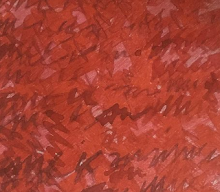On the campus of Penn State University, a rivalry between a rogue campus blog and the official newspaper has become a fascinating mirror of the strife between old and new media. In only a matter of months, the unofficial campus blog
Onward State, has marshaled the power of social media to compete with the award winning 112-year-old campus paper
The Daily Collegian. With one-tenth of the
Collegian’s staff size,
Onward State has constructed a virtual newsroom that collaborates in real-time with
Google Wave, outsourced its tip-line to
Twitter, and is unabashed about linking to a competitor’s story.
Perhaps the most interesting thing about this sociological Petri dish is that many of the players began as teenagers. In other words, the old/new media rivalry might not be generational, but ideological. What follows is a practical look at the successful social media strategies of
Onward State, and a comparison of the world views of two camps of student journalists and their professional counterparts — a comparison that portends a long war to come.
A Crowdsourced Newsroom

“We focused on our Twitter presence from the very beginning, and it’s paid dividends for us in terms of referring traffic to the site and really becoming a part of the community,” said Davis Shaver, founder of
Onward State. Tapping the power of the crowd has been essential to multiplying the resources of
Onward State’s relatively tiny news team. By being responsive to the social media community, Shaver told
Mashable ( )
) that they “curated this ecosystem in the sense that people will actually send stories to us on Twitter.”
The transparent back-and-forth embeds
Onward State into the hub of campus conversation. For instance, when an academic department decided to try its hand at democracy and hold a naming contest for the new student center,
Onward State was a natural partner, whom they first informed via Twitter. As such, Shaver never underestimates the “sheer power that a well-run Twitter feed can have.”
On the other side of the aisle,
The Collegian takes a decidedly expert-based approach. Editor-in-Chief Rossilynne Skena said that while social media is “great for getting out short bursts of information,” the
Collegian’s competitive advantage is “really going into depth and detail about a particular subject,” complete with perspectives from local leaders. Instead of putting their ear to the social media grindstone,
The Collegian tracks down leads through trusted sources. Once a connection is made, Skena prides herself on being able to assign a person experienced in the field with personal “training” from the
Collegian.
Shaver’s defection from
The Collegian, due to what he believed was a technologically-phobic bureaucracy, is a mirror imagine of what was happening to some newsrooms in the mid-2000s. Erin Weinger, a former
Los Angeles Times fashion writer, recounts her frustrations with her editorial team. “It took multiple meetings and various e-mails to get the permission needed to get my section on Twitter,” she said.
“Journalism has remained so unchanged … that journalists didn’t feel they had to change.” As such, there was a general skepticism of online sources. “Leads can be found everywhere now, from places you’d never deem credible in the past. Amateur blogs, for one … But, five years ago, if you said you were citing a stranger on the Internet you’d [probably] get yelled at by an editor.”
Appropriately enough, Erin now runs her own
LA fashion blog.
To Link, or Not to Link

It should be no surprise then that
Onward State happily promotes a competitor’s story with direct links, while
The Collegian questions the very logic of such a strategy. Shaver admitted that he doesn’t always produce the web’s best content, and has “no qualms about writing the blog post and porting to the story.” For Skena, linking to a competitor’s story “doesn’t make sense.” A symbolic move which tells readers to “go read our competition” would be devastating to the trust they’ve worked for over a century to gain, according to Skena.
The largely philosophical wrestling match over linking stories became a professional journalism crisis when a
New York Times journalist was
caught plagiarizing in order to push out a time-sensitive news story. Felix Salmon, a blogger for Reuters,
argued that the root of this dishonesty lies squarely in the link-phobic mindset of old-media journalists.
“[W]hat’s more depressing still is that
even the bloggers at the [New York Times] and [Wall Street Journal] are link-phobic, often preferring to re-report stories found elsewhere, giving no credit to the people who found and reported them first. It’s almost as though they think that linking to a story elsewhere is an admission of defeat, rather than a prime reason why people visit blogs in the first place.
Salmon concluded, “It’s a print reporter’s mindset.”
Virtual Collaboration
“Our office really consists of my dorm room, I guess. We don’t have any kind of physical structure, so we use [
Google ( )
)] Wave as our virtual newsroom,” said Shaver. Throughout the day, Shaver and his team monitor several waves at once, each tailored for a different department. In a single browser tab, Shaver has a unique eagle’s-eye view of the entire newsroom. In real-time, his editorial team can toggle between multiple conversations or throw an idea out to the crowd for greater perspective.
Consistent with its crowdsourcing mantra,
Google Wave ( )
) permits more inclusive perspective and helps keep eyes everywhere on campus. For perspective, Shaver uses Google Wave to canvas his writers, which hail from different social groups on campus. As such, he’ll put “the nucleus of an idea up in wave and [let] it float and see what people say about it.”
As for keeping tabs on campus activity, because there is no formal workplace,
Onward State writers are already situated throughout the university. For instance, when the Oscar Meyer Weiner Mobile came to Penn State,
Onward State reporters were already sprinkled throughout campus, and a writer in the vicinity could have been tapped to snag a quick photo. As silly as it may seem to give priority to something like the Weiner Mobile, hyper-local news is still about competitive advantage, and speedy reporting gives
Onward State an upper-hand.
The low-overhead of a crowdsourced newsroom has become an appealing alternative as the Internet’s top destinations, from
Craigslist ( )
) to Google,
erode the advertisement cash cow that once funded well-staffed newspapers.
Now, a talented writer with a broadband connection can reach the same audience. As new media advocate Jeff Jarvis
wrote on his blog “I’m seeing that it’s possible for someone to come along with relatively little investment and a much smaller staff that operates more collaboratively to compete with the big, expensive traditional newsroom at low cost.”
In contrast,
The Collegian thrives in the dynamic of a centralized newsroom. “What we really like is when we’re able to work with the people face-to-face,” said Skena. Instead of tossing up an idea to a digital billboard, Skena likes the ability to throw the keyboard to a colleague for help punching through writer’s block.
Hobbyists Aren’t in it For the Money
When Rupert Murdoch, chairman of Newscorp, began elaborating on its threats to
pull Fox News content from Google News, the thrust of his point was simple: “Quality content is not free.”
Arriana Huffington, who’s blog was implicitly indicted in Murdoch’s article, responded with a
visceral rebuttal. Huffington argued that people like Murdoch “can’t understand why someone would find it rewarding to weigh in on the issues — great and small — that interest them. For free. They don’t understand the people who contribute to
Wikipedia ( )
) for free, who maintain their own blogs for free, who Twitter for free, who constantly refresh and update their Facebook page for free, who want to help tell the stories of what is happening in their lives and in their communities… for free.”
Onward State’s motivational strategy seems to be representative of this view. “Money making is not something that we’ve really embraced yet,” said Shaver. The money from one fund raiser they did manage went to a staff party.
A Divergent Future
In reality, the “old vs. new media” split is not a cleanly sliced dichotomy. Media titans, such as CNN, now regularly respond on-air to Twitter chatter, especially during the
2009 Iran Election Crisis, for example. But, as
Jon Stewart has joked, the adoption of social media has been a messy collision of disparate worlds.
Perhaps the future of how this will all unfold is again best foretold by the situation at Penn State.
Onward State plans to dive into the dark waters of amateur content, developing a larger space for user-generated content on both
Facebook ( )
) and its website.
The Collegian, in contrast, has just begun (as of January) to play with a more interactive Twitter feed, and is explicit about keeping user content at arm’s length.
However, it’s far too early to tell which strategy is, ultimately, more advantageous.
The Chronicle of Higher Education reports that the flash-bang success of online college newspapers may be unsustainable, especially if a charismatic leader leaves the paper for, say, a semester abroad. Professional blogs as well, may find some undiscovered Kryptonite. If the pace of innovation is any indication, it may not be long before we know the answer.
































